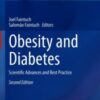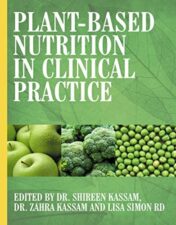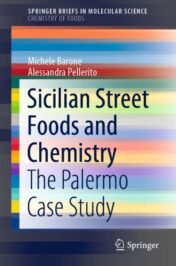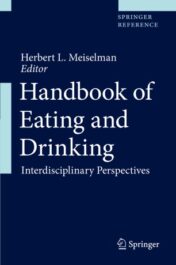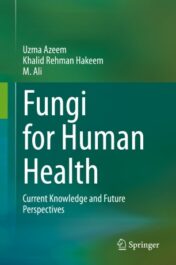Arsenic in Drinking Water and Food 2020 Original pdf
$15
Arsenic in Drinking Water and Food 2020 Original pdf
Arsenic contamination poses a major environmental problem, especially in Southeast Asian countries like Bangladesh and India. Threatening the health of millions of people due to arsenic’s toxicity and carcinogenicity, the major routes of arsenic exposure for humans are either through drinking water or crops. Rice is the crop most affected by arsenic owing to its cultivation in major arsenic contaminated areas, biogeochemical factors in the soil during rice growth, and specific features of rice that enable it take up more arsenic than other crop plants.
This book addresses the problem of arsenic by pursuing a holistic approach. It presents the status quo in different parts of the world (North and South America, Europe, Asia, etc.) and provides essential information on food-related arsenic exposure risks for humans, and possible preventive and curative measures for tackling arsenic poisoning. It covers the arsenic contamination status of rice, rice-based products, other vegetables, fishes, mushrooms, and other foods, with a special focus on rice-arsenic interactions. The mechanisms of arsenic uptake, translocation and distribution in plants and grains are also explained. In closing, the book reviews a variety of prospective agronomic and biotechnological solutions to the problem of arsenic accumulation in rice grains.
The book is intended for a broad audience including researchers, scientists, and readers with diverse backgrounds including agriculture, environmental science, food science, environmental management, and human health. It can also be used as an important reference guide for undergraduate and graduate students, university faculties, and environmentalists.
Related Products
Nutrition Dietetics Books
Plant based Nutrition in Clinical Practice 2022 Epub+converted pdf
Nutrition Dietetics Books
Nutrition Dietetics Books
Wardlaw’s Contemporary Nutrition, 12th edition 2021 Original PDF
Nutrition Dietetics Books
Mediterranean Diet Cookbook For Dummies, 3rd Edition 2022 Original PDF
Nutrition Dietetics Books
Krause and Mahan’s Food and the Nutrition Care Process, 16th edition 2022 Original PDF
Nutrition Dietetics Books
Nutrition Dietetics Books
Nutrition and Sensation, 2nd Edition 2022 epub+converted pdf
Nutrition Dietetics Books
Alimentation de l’enfant et de l’adolescent (French) 2022 Original PDF
Nutrition Dietetics Books
Cooking for Health and Disease Prevention: From the Kitchen to the Clinic 2022 Original PDF
Nutrition Dietetics Books
Cooking for Health and Disease Prevention: From the Kitchen to the Clinic 2022 Epub+ converted pdf
Nutrition Dietetics Books
Tackling Obesity and Overweight Matters in Health and Social Care 2022 Original PDF
Nutrition Dietetics Books
Nutritional and Integrative Strategies in Cardiovascular Medicine 2022 Original pdf
Nutrition Dietetics Books
Nutrition Dietetics Books
Transforming Food Environments 1st edition 2022 Original pdf
Nutrition Dietetics Books
Nutrition Dietetics Books
Probiotics for Human Nutrition in Health and Disease 1st Edition 2022 Original pdf
Nutrition Dietetics Books
Food: The Chemistry of its Components (6th Edition) 2015 Epub + Converted Pdf
Nutrition Dietetics Books
Wardlaw’s Contemporary Nutrition, 12th Edition 2022 Epub+Converted pdf
Nutrition Dietetics Books
Nutrition Dietetics Books
Nutrition, Weight, and Digestive Health: The Clinician’s Desk Reference 2022 Original PDF
Nutrition Dietetics Books
Nutrition Dietetics Books
Nutritional and Integrative Strategies in Cardiovascular Medicine 2021 Original PDF
Nutrition Dietetics Books
Nutrition Dietetics Books
Biochemical, Physiological, and Molecular Aspects of Human Nutrition, 4e 2019 EPUB & converted pdf
Nutrition Dietetics Books
Nutrition Dietetics Books
Food for Thought: The Integrated Practitioner 2013 Original PDF
Nutrition Dietetics Books
Critical Perspectives in Food Studies, 3rd Edition 2021 EPUB + Converted PDF
Nutrition Dietetics Books
Nutrition Dietetics Books
The Athlete’s Gut: The Inside Science of Digestion, Nutrition, and Stomach Distress 2020 Mp3 files
Nutrition Dietetics Books
Wardlaw’s Perspectives in Nutrition 12th Edition 2022 Original pdf
Nutrition Dietetics Books
Nutrition and Functional Foods in Boosting Digestion, Metabolism and Immune Health 2021 Original PDF
Nutrition Dietetics Books
Routledge Handbook of Critical Obesity Studies 2021 Original PDF
Nutrition Dietetics Books
Nutrition in Clinical Practice Fourth Ed 2021 epub3+converted pdf
Nutrition Dietetics Books
Nutrition Dietetics Books
Nutrition Dietetics Books
Wound Healing, Tissue Repair, and Regeneration in Diabetes 2020 Original pdf
Nutrition Dietetics Books
Nutrition Dietetics Books
Therapeutic, Probiotic, and Unconventional Foods 2018 Original pdf
Nutrition Dietetics Books
Steviol Glycosides Production, Properties, and Applications 2020 Original pdf
Nutrition Dietetics Books
Nutrition Dietetics Books
Nutrition Dietetics Books
Roselle (Hibiscus sabdariffa) Chemistry, Production, Products, and Utilization 2021 Original pdf
Nutrition Dietetics Books
Nutrition Dietetics Books
Pulsed Electric Fields to Obtain Healthier and Sustainable Food for Tomorrow 2020 Original pdf
Nutrition Dietetics Books
Proteins: Sustainable Source, Processing and Applications 2019 Original pdf
Nutrition Dietetics Books
Probiotics and Prebiotics in Foods Challenges, Innovations, and Advances 2021 Original pdf
Nutrition Dietetics Books
Present Knowledge in Nutrition Volume 2: Clinical and Applied Topics in Nutrition 2020 Original pdf
Nutrition Dietetics Books
Present Knowledge in Nutrition Volume 1: Basic Nutrition and Metabolism 2020 Original pdf
Nutrition Dietetics Books
The Practical Handbook of Perioperative Metabolic and Nutritional Care 2019 Original pdf
Nutrition Dietetics Books
Pathology Oxidative Stress and Dietary Antioxidants 2020 Original pdf
Nutrition Dietetics Books
Oncological Functional Nutrition Phytochemicals and Medicinal Plants 2021 Original pdf
Nutrition Dietetics Books
Nutrition Dietetics Books
Nutrition Economics Principles and Policy Applications 2017 Original pdf
Nutrition Dietetics Books
Nutrition Dietetics Books
Mineral Composition and Radioactivity of Edible Mushrooms 2019 Original pdf
Nutrition Dietetics Books
The Mediterranean Diet An Evidence-based Approach 2020 Original pdf
Nutrition Dietetics Books
The Interaction of Food Industry and Environment 2020 Original pdf
Nutrition Dietetics Books
Nutrition Dietetics Books
Glucosinolates: Properties, Recovery, and Applications 2019 Original pdf
Nutrition Dietetics Books
Nutrition Dietetics Books
Functional Foods in Cancer Prevention and Therapy 2020 Original pdf
Nutrition Dietetics Books
Nutrition Dietetics Books
Flour and Breads and their Fortification in Health and Disease Prevention 2019 Original pdf
Nutrition Dietetics Books
Environmental Impact of Agro-Food Industry and Food Consumption 2021 Original pdf
Nutrition Dietetics Books
Dietary Sugar, Salt and Fat in Human Health 2020 Original pdf
Nutrition Dietetics Books
Dietary Fiber: Properties, Recovery, and Applications 2019 Original pdf
Nutrition Dietetics Books
Nutrition Dietetics Books
Williams’ Basic Nutrition & Diet Therapy, 16th Edition 2021 Original pdf
Nutrition Dietetics Books
The Prevention of Cardiovascular Disease Through the Mediterranean Diet 2018 original pdf
Nutrition Dietetics Books
Nutrición clínica geriátrica (Spanish Edition) 2020 Epub and converted pdf
Nutrition Dietetics Books
Lifestyle Medicine: Essential MCQs for Certification in Lifestyle Medicine 1st Ed 2021 Original pdf
Nutrition Dietetics Books
Ethnic Fermented Foods and Beverages of India: Science History and Culture 2020 Original pdf
Nutrition Dietetics Books
Sicilian Street Foods and Chemistry The Palermo Case Study 2020 Original pdf
Nutrition Dietetics Books
The Potato Crop Its Agricultural, Nutritional and Social Contribution to Humankind 2020 Original pdf
Nutrition Dietetics Books
Food Science, Technology and Nutrition for Babies and Children 2020 Original pdf
Nutrition Dietetics Books
Medicinal, Aromatic and Stimulant Plants 2020 Original pdf+videos
Nutrition Dietetics Books
Nutrition Dietetics Books
Clinical and Preclinical Models for Maximizing Healthspan Methods and Protocols 2020 Original pdf
Nutrition Dietetics Books
Accelerated Plant Breeding, Volume 2 Vegetable Crops 2020 Original pdf
Nutrition Dietetics Books
Handbook of Eating and Drinking Interdisciplinary Perspectives 2020 Original pdf
Nutrition Dietetics Books
Nutrition Dietetics Books
Spectroscopic Techniques & Artificial Intelligence for Food and Beverage Analysis 2020 Original pdf
Nutrition Dietetics Books
Obesity and Diabetes Scientific Advances and Best Practice 2020 Original pdf
Nutrition Dietetics Books
Brassica Improvement Molecular, Genetics and Genomic Perspectives 2020 Original pdf
Nutrition Dietetics Books
Fungi for Human Health Current Knowledge and Future Perspectives 2020 Original pdf
Nutrition Dietetics Books
Antioxidants in Vegetables and Nuts – Properties and Health Benefits 2020 Original pdf


